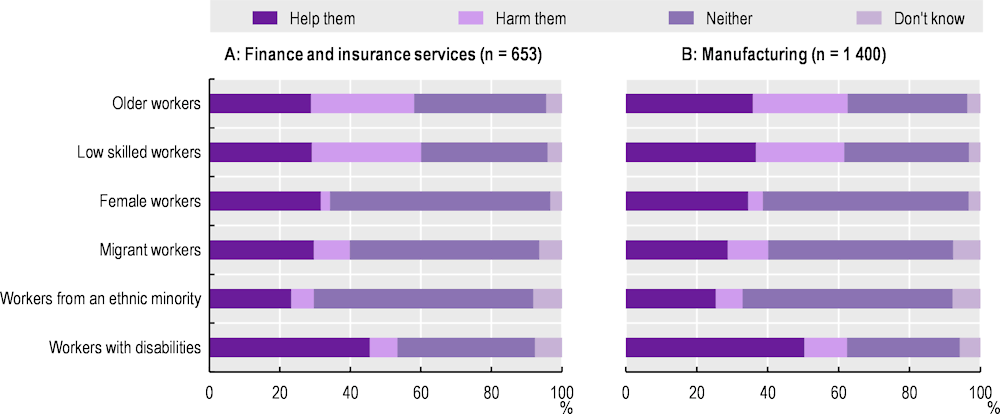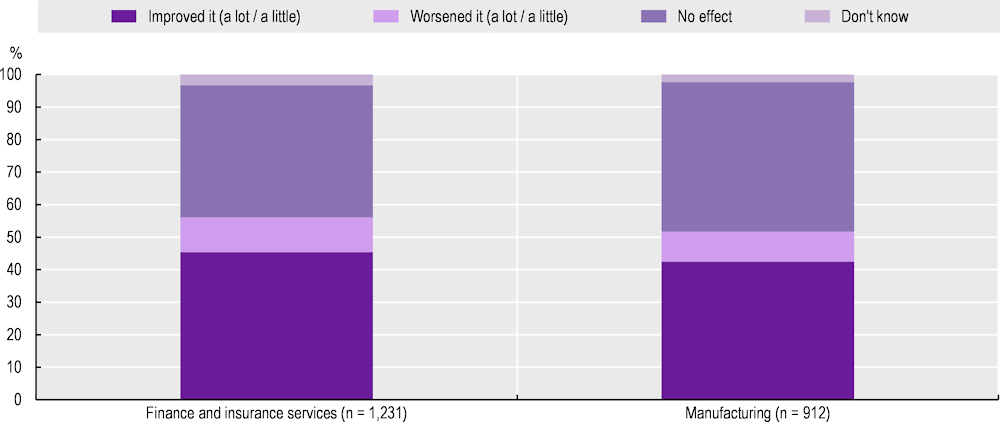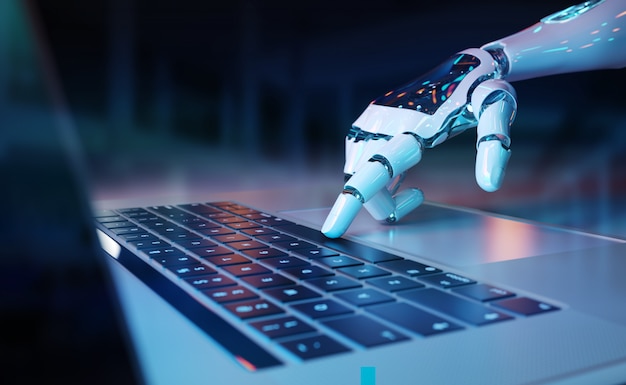The adoption of Artificial Intelligence (AI) in the labor market holds promises of improving job quality for certain groups of workers while also potentially exacerbating inequalities and biases for others, according to the OECD Employment Outlook 2023 report.
The report highlights that Artificial Intelligence systems have the potential to enhance workplace inclusiveness and reduce bias, but achieving these benefits requires addressing bias in AI’s development and implementation.
AI’s Impact on Inclusiveness for Disadvantaged Groups
Artificial Intelligence can contribute to greater inclusiveness by improving the accessibility of the workplace for disadvantaged workers. AI-powered assistive devices have become more widespread, benefiting workers with visual, speech, or hearing impairments, as well as those with prosthetic limbs.
For example, speech recognition solutions and live captioning systems can facilitate communication and access to jobs that require interpersonal interactions. Again, AI can enhance the capabilities of low-skilled workers, such as translating languages in real-time and improving their performance in various domains.

However, challenges exist in AI’s inclusiveness for certain groups. AI systems may be difficult for individuals with low levels of digital skills, which can negatively impact older workers, women, and the low-skilled more generally.
The availability and quality of AI-generated text and translations can also create inequalities based on language usage, limiting the benefits of AI technology for some workers.
Employers’ perceptions of AI’s impact on inclusiveness are mixed, with some believing it will help disadvantaged workers, while others think it could harm them. An instance is employers in finance and manufacturing tend to believe AI will benefit workers with disabilities but could potentially harm older and low-skilled workers.
The Risk of Bias in AI Systems
The report emphasizes the importance of addressing bias in Artificial Intelligence systems’ design and implementation to ensure fairness in the workplace. AI has the potential to promote more objective performance evaluations, offering better recognition and promotion opportunities for workers who have traditionally faced bias, such as women or older workers. However, if AI replicates existing biases, it may perpetuate discrimination and worsen job quality and inclusiveness for certain groups.
Bias can emerge at different stages of AI use in the workplace, including data input and system design. Lack of diversity in the tech industry can lead to biased decision-making in choosing parameters and training data. Additionally, biased data used to train Artificial Intelligence systems can result in unfair evaluations of performance and hinder the consideration of contextual factors not represented in the data.

Balancing AI’s Potential for Inclusiveness and Bias Mitigation
The report stresses that AI can be a powerful tool for reducing bias and enhancing inclusiveness, but this outcome depends on thoughtful and well-implemented design. Recent research shows that AI applications can improve productivity and inclusiveness when designed to explore underrepresented profiles, rather than solely relying on historical data. Thoughtful design can help ensure that AI acts as a complement to human decision-making and collectively reduces bias.
Conclusion
AI’s adoption in the labor market has the potential to improve job quality and inclusiveness for some workers while posing risks of exacerbating biases and inequalities for others.
To harness AI’s potential for inclusiveness and fairness, addressing bias in AI development and implementation is paramount.
Policymakers, employers, and developers must work together to design Artificial Intelligence systems that promote workplace inclusiveness, reduce bias, and maximize the benefits of this transformative technology for all workers. By doing so, Artificial Intelligence can become a powerful force for positive change in the labor market.








Comments 1